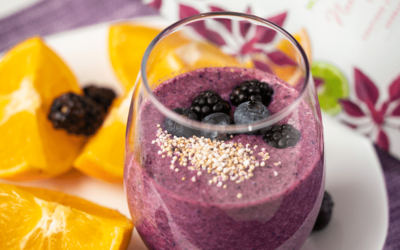The first time the presence of antioxidant compounds in amaranth was reported in 1994, when researchers at the University of Minnesota used normal phase high performance liquid chromatography with fluorescence detection to examine amaranth seeds and found that there is a high content in α-tocopherol (2.97 to 15.65 mg / kg of seed), β-tocotrienol (5.92 to11.47 mg / kg of seed) and γ-tocotrienol (0.01 to 0.42 mg / kg of seed) (Lehmann, Putnam, & Qureshi , 1994).
Over time, the antioxidant activity of other amaranth compounds, such as phytosterols, was analyzed. Studies have revealed that amaranth contains large amounts of the main phytosterols: β-sitosterol, campesterol, and stigmasterol compared to other plants (Marcone, Kakuda, & Yada, 2003).
Among other amaranth compounds with antioxidant properties, scientists distinguish phenolic compounds, flavonoids, vitamins, carotenoids and unsaturated fatty acids. (Su, Rowley, Itsiopoulos, & O’Dea, 2002; Huerta-Ocampo & Barba de la Rosa, 2011).
Tocopherols (α-tocopherol, β-tocotrienol, γ-tocotrienol)
They are isomers of vitamin E with important antioxidant properties. Vitamin E (also known as tocopherol or alpha-tocopherol) is a type of antioxidant important for many body processes. It helps the nerves and muscles work well, prevents the formation of blood clots and strengthens the immune system (Bravo, Mireya. Et al., 1976).
Phytosterols (β-sitosterol, Campesterol, Stigmasterol)
Phytosterols are sterols of plant origin that are widely distributed in nature. Their regular consumption helps reduce blood cholesterol levels, and therefore, they are considered very important in the prevention of cardiovascular diseases. Plant sterols block the absorption of cholesterol at the intestinal level, thus producing a decrease in the plasma levels of total cholesterol and LDL cholesterol (the so-called bad cholesterol), without modifying the levels of HDL (the good cholesterol).
Carotenoids (Lutein, Zeaxanthin)
Carotenes are precursor pigments of vitamin A and therefore are linked to skin care. They are natural antioxidants that stimulate the immune response, helping to reduce the adverse effects of stress. In addition, it has been documented that they have a beneficial effect on human health, especially because they act against some chronic-degenerative diseases.
Phenolic compounds (Rutin, Coumaroylquinic acid)
They are substances with a greater capacity to avoid oxidative stress. Numerous studies reveal that a diet rich in flavonoids is associated with a lower risk of cardiovascular diseases, diabetes linked to obesity and certain types of cancer.
Fatty acids
Some studies suggest that long-chain n-3 polyunsaturated fatty acids (PUFAs) can produce changes in homeostatic variables, which are associated with beneficial effects in the treatment of cardiovascular diseases.
Given the antioxidant properties of amaranth, the consumption of its seeds and leaves can reduce the negative effect of free radicals or oxidative stress in our body, as has been proven.
- Lehmann, J. W., Putnam, D. H., & Qureshi, A. A. (1994). Vitamin E isomers in grain amaranths (Amaranthus spp.). Lipids, 29(3), 177–181. https://doi.org/10.1007/BF02536726
- Marcone, M. F., Kakuda, Y., & Yada, R. Y. (2003). Amaranth as a rich dietary source of beta- sitosterol and other phytosterols. Plant foods for human nutrition (Dordrecht, Netherlands), 58(3), 207–211. https://doi.org/10.1023/b:qual.0000040334.99070.3e
- Su, Q., Rowley, K. G., Itsiopoulos, C., & O’Dea, K. (2002). Identification and quantification of major carotenoids in selected components of the Mediterranean diet: Green leafy vegetables, figs and olive oil. European Journal of Clinical Nutrition, 56(11), 1149–1154. https://doi.org/10.1038/sj.ejcn.1601472
- Huerta-Ocampo, J. A., & Barba de la Rosa, A. P. (2011). Amaranth: A Pseudo-Cereal with Nutraceutical Properties. Current Nutrition & Food Science, 7(1), 1–9. Recuperado de https://www.ingentaconnect.com/content/ben/cnf/2011/00000007/00000001/art00001
- Tang, Y., Li, X., Chen, P. X., Zhang, B., Liu, R., Hernandez, M., … Tsao, R. (2016). Assessing the fatty acid, carotenoid, and tocopherol compositions of amaranth and quinoa seeds grown in Ontario and their overall contribution to nutritional quality. Journal of Agricultural and Food Chemistry, 64(5), 1103–1110. https://doi.org/10.1021/acs.jafc.5b05414






